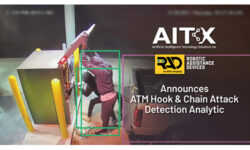Web Feature: Orlando Airport Overcomes Hurdles of Hybrid Installation

If trying to pinpoint the specific location of an individual in an airport is difficult, imagine trying to find the location of a deadly instrument, such as a bomb. Now imagine trying to detect someone releasing harmful substances into the air that cannot be seen with the naked eye.
These are some of the many challenges confronting airport security personnel from all across the world. Historically speaking, both domestic and international terrorists have identified airports and planes as popular targets for their attacks. From this vantage, United Airlines’ 1965 tagline, “Flying the Friendly Skies,” sounds bitterly ironic.
A tragic example of this frightening reality is the devastating attack that was carried out in the United States, on September 11, 2001. In the aftermath of 9/11, every American airline company saw a dramatic reduction in domestic and international flights, which continued for many months. During this period, the airline companies lost billions of dollars in revenue and laid off nearly 100,000 workers. Not to be excluded, airports observed a significant drop in traffic and sales. It is an unfortunate fact that it often takes industry-crippling events to create the conditions for industry-improving solutions.
Taking proactive steps to prevent problems before they occur, airports have responded by beefing up their security staff and investing in the latest surveillance and detection technologies. Since then, ticket sales have returned back to pre-911 levels and U.S. airport security personnel have successfully thwarted all major disruptions.
SFB Airport Beefs Up Security
Without the use of innovative technologies, keeping up this level of airport safety would be simply impossible. Given its latest technical acquisitions, Orlando’s Sanford International Airport (SFB) is intent on not being left behind.
Known as Central Florida’s “Gateway to the Sun,” SFB is one of the busiest airports in the U.S. With the daunting responsibility of accommodating approximately two million travelers each year, SFB had good reason to step up its interest in the latest security technologies.
 The airport’s existing commercial-grade analog CTV system was based on the antiquated VCR format, and used to monitor security issues without the functionality or the capacity to properly archive video recordings. This posed several problems for the SFB security staff, including inflexible options (they were limited to only using proprietary equipment for video playback) and inferior video quality (using tapes that were overwritten on a monthly basis).
The airport’s existing commercial-grade analog CTV system was based on the antiquated VCR format, and used to monitor security issues without the functionality or the capacity to properly archive video recordings. This posed several problems for the SFB security staff, including inflexible options (they were limited to only using proprietary equipment for video playback) and inferior video quality (using tapes that were overwritten on a monthly basis).
There was also a serious problem related to the real-time positioning, control and management of live video feeds coming in from the dispersed cameras, as well as an inability of quickly accessing archived video. The time had clearly come for a new security system and the man chosen to spearhead this effort was Bryant Garrett, SFB’s chief financial officer and chief of the Sanford Airport Police Department. With years of experience in airport security and extensive knowledge of the existing system, Garrett was the perfect candidate for the overhaul.
If you enjoyed this article and want to receive more valuable industry content like this, click here to sign up for our FREE digital newsletters!

Security Is Our Business, Too
For professionals who recommend, buy and install all types of electronic security equipment, a free subscription to Commercial Integrator + Security Sales & Integration is like having a consultant on call. You’ll find an ideal balance of technology and business coverage, with installation tips and techniques for products and updates on how to add to your bottom line.
A FREE subscription to the top resource for security and integration industry will prove to be invaluable.







